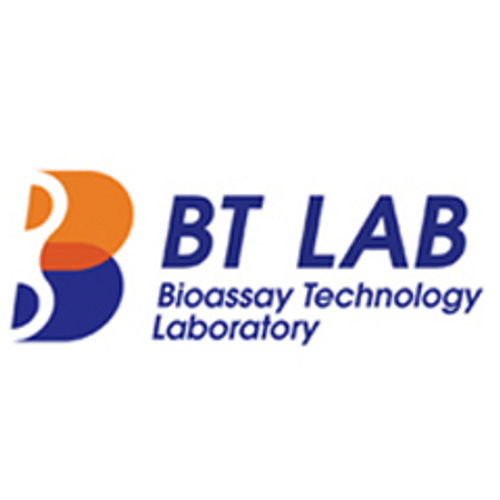Product Description
Human Receptor for advanced glycation end products (RAGE/AGER) ELISA Kit | KTE60960 | Abbkine
Application: This Human Receptor for advanced glycation end products (RAGE/AGER) ELISA Kit employs a two-site sandwich ELISA to quantitate AGER in samples. An antibody specific for AGER has been pre-coated onto a microplate. Standards and samples are pipetted into the wells and anyAGER present is bound by the immobilized antibody. After removing any unbound substances, a biotin-conjugated antibody specific for AGER is added to the wells. After washing, Streptavidin conjugated Horseradish Peroxidase (HRP) is added to the wells. Following a wash to remove any unbound avidin-enzyme reagent, a substrate solution is added to the wells and color develops in proportion to the amount of AGER bound in the initial step. The color development is stopped and the intensity of the color is measured.
Detection Method: Colorimetric
Conjugate: N/A
Sample Type: Cell culture supernatants#Serum#Plasma#Other biological fluids
Assay Type: Multiple steps standard sandwich ELISA assay with a working time of 3-5 hours. It depends on the experience of the operation person.
Kit Component: • Human Receptor for advanced glycation end products microplate
• Human Receptor for advanced glycation end products standard
• Human Receptor for advanced glycation end products detect antibody
• Streptavidin-HRP
• Standard diluent
• Assay buffer
• HRP substrate
• Stop solution
• Wash buffer
• Plate covers
Features & Benefits: Human Receptor for advanced glycation end products (RAGE/AGER) ELISA Kit has high sensitivity and excellent specificity for detection of Human AGER. No significant cross-reactivity or interference between Human AGER and analogues was observed.
Calibration Range: Please inquire
Limit Of Detection: Please inquire
Usage Note: • Do not mix components from different kit lots or use reagents beyond the kit expiration date.
• Allow all reagents to warm to room temperature for at least 30 minutes before opening.
• Pre-rinse the pipet tip with reagent, use fresh pipet tips for each sample, standard and reagent to avoid contamination.
• Unused wells must be kept desiccated at 4 °C in the sealed bag provided.
• Mix Thoroughly is very important for the result. It is recommended using low frequency oscillator or slight hand shaking every 10 minutes.
• It is recommended that all samples and standards be assayed in duplicate or triplicate.
Storage Instruction: The unopened kit should be stored at 2 - 8°C. After opening, please store refer to protocols.
Shipping: Gel pack with blue ice.
Precaution The product listed herein is for research use only and is not intended for use in human or clinical diagnosis. Suggested applications of our products are not recommendations to use our products in violation of any patent or as a license. We cannot be responsible for patent infringements or other violations that may occur with the use of this product.
Background: RAGE, the receptor for advanced glycation endproducts is a 35kD transmembrane receptor of the immunoglobulin super family which was first characterized in 1992 by Neeper et al.. Its name comes from its ability to bind advanced glycation endproducts (AGE), a heterogeneous group of non-enzymatically altered proteins. Besides AGEs, RAGE is also able to bind other ligands and is thus often referred to as a pattern recognition receptor.The interaction between RAGE and its ligands is thought to result in pro-inflammatory gene activation. Due to an enhanced level of RAGE ligands in diabetes or other chronic disorders, this receptor is hypothesised to have a causative effect in a range of inflammatory diseases such as diabetic complications, Alzheimer's disease and even some tumors.
Alternative Names: AGER; DAMA-358M23.4; MGC22357; RAGE; receptor for advanced glycosylation end-products
Search name: AGER; DAMA-358M23.4; MGC22357; RAGE; receptor for advanced glycosylation end-products
Tag: AGER
 Euro
Euro
 USD
USD
 British Pound
British Pound
 NULL
NULL








